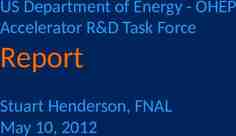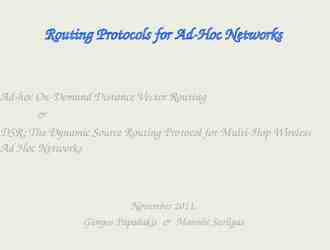Everything You Wanted to Know About GLPs…. but were afraid to
17 Slides114.00 KB
Everything You Wanted to Know About GLPs . but were afraid to ask Janet Rose Christensen, M.S.P.H. Vice President, Regulatory Affairs and Quality AVI BioPharma, Inc. Portland, OR [email protected]/503.227.00554 1
Overview Definitions Elements Concepts Application Challenges Pitfalls Summing it Up But first 2
Who Am I? 25 years in the industry Ethical drugs, biologics, devices Degrees from U of W Married with 2 dogs and 4 cats 3
GLPs: Definition Basis: 21 CFR Part 58: GOOD LABORATORY PRACTICE FOR NONCLINICAL LABORATORY STUDIES GLPs: Good Laboratory Practices Nonclinical laboratory study means in vivo or in vitro experiments in which test articles are studied prospectively in test systems under laboratory conditions to determine their safety. The term does not include studies utilizing human subjects or clinical studies or field trials in animals. The term does not include basic exploratory studies carried out to determine whether a test article has any potential utility or to determine physical or chemical characteristics of a test article. 4
Experiment “An operation carried out under controlled conditions in order to discover an unknown effect or law, to test or establish a hypothesis, or to illustrate a known law.” Merriam-Webster 5
“GLP” is Misused GLP does not mean: Requirements for recording QC data Requirements for any laboratory work (e.g., R&D or QC) Definition of a material grade (“GLP-grade”) GLP does not pertain to ANYTHING other than a nonclinical laboratory study. 6
Concepts GLPs have more specific requirements, compared with other regulations. GLPs apply only to nonclinical safety studies. GLP studies can be in vitro or in vivo. Nonclinical studies are critical to any clinical study leading through market application (drug, devices, biologics). 7
Application IND Enabling Studies Toxicology Safety Pharmacology Genotoxicity Marketing Application Studies Long-term toxicity Carcinogenicity Reproductive toxicity 8
Applications - Details Protocol format is defined Use it - the reviewers expect information provided in a consistent manner for everyone. Think it through - deviations can be perceived negatively. Prepare and approve protocol BEFORE starting work (contractors expect this). 9
More Details Quality Assurance Unit Responsibilities defined Study audits Master Schedule Report to management Final Report review/sign-off 10
More Details Study Director The buck stops there Protocol Study execution Final Report 11
Other Details from GLPs Animal Care Standard operating Procedures Records Equipment Analytical methods (from a guidance document) Disqualification 12
Challenges An IND/IDE/IAND-enabling study requires an articulation of the anticipated clinical plan. Route of administration Dose schedule Formulation Uses material representative of what will be use in the clinic 13
Challenges (continued) For a small company, there is a tendency to want the lowest cost - but you may pay for it later. Apply the old adage: Fast Cheap GLP-compliant PICK-TWO 14
Pitfalls Not ensuring the test article is representative of the process, materials, etc., of the clinical product You may have to repeat the study Your clinical study could be delayed Not using the data obtained from the study to establish monitoring in the human study. Not reporting safety issues from a GLP study while the clinical study is occurring. 15
More Pitfalls Assuming the contract lab knows what they’re doing (trust but verify) Not seeking FDA concurrence of the study design before starting (risky) Not carefully reviewing the draft report before sending it to FDA. Not reporting ALL data obtained from a nonclinical study - you can discount it but you must report it. 16
Summing it Up GLPs are specific in their requirements GLPs are critical to clinical trial subject safety GLP studies are critical elements for an IND, leading to market approval. 17






















